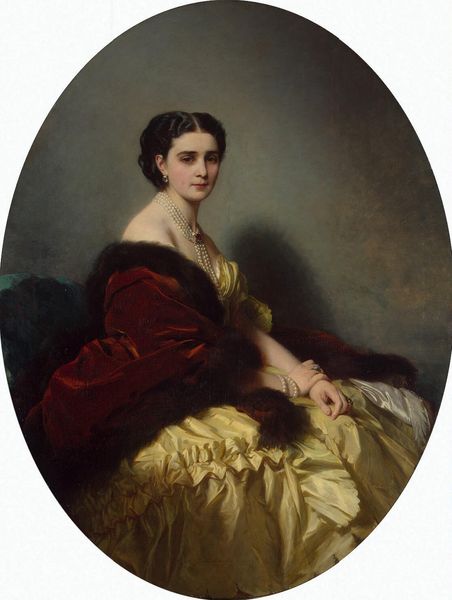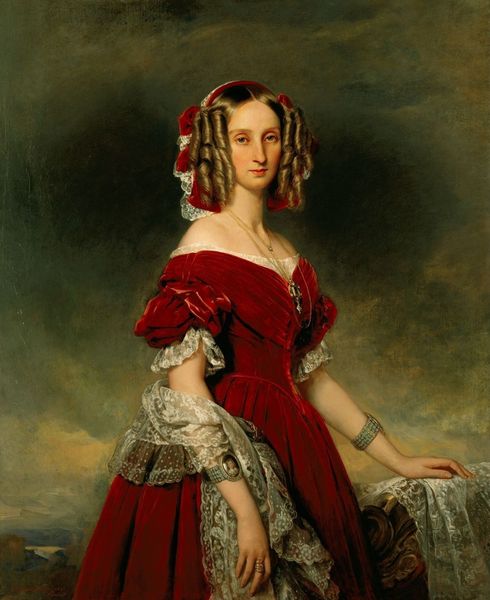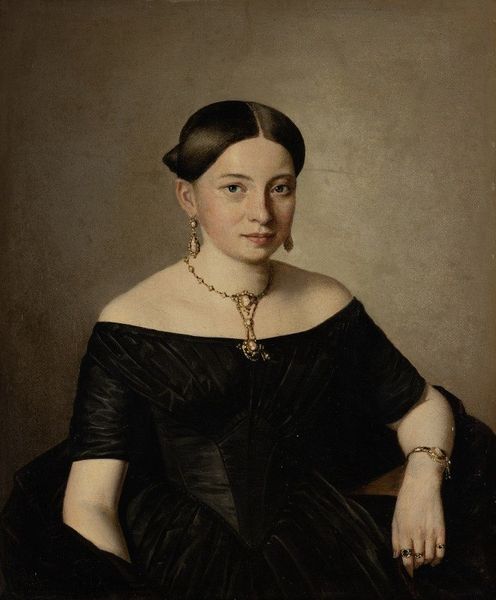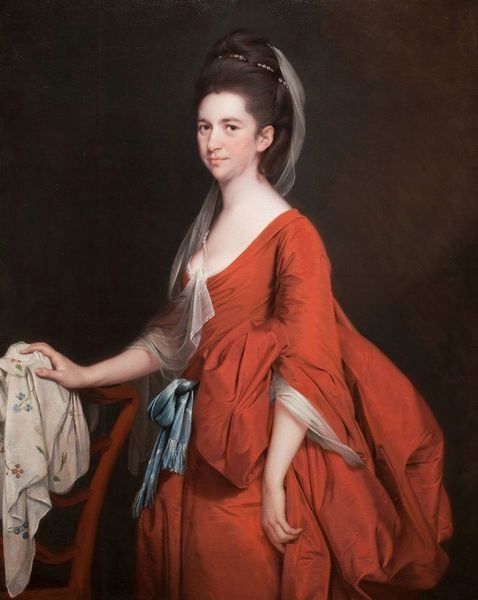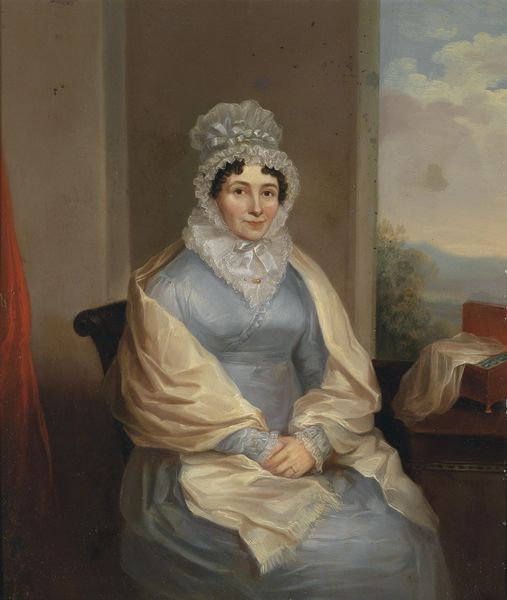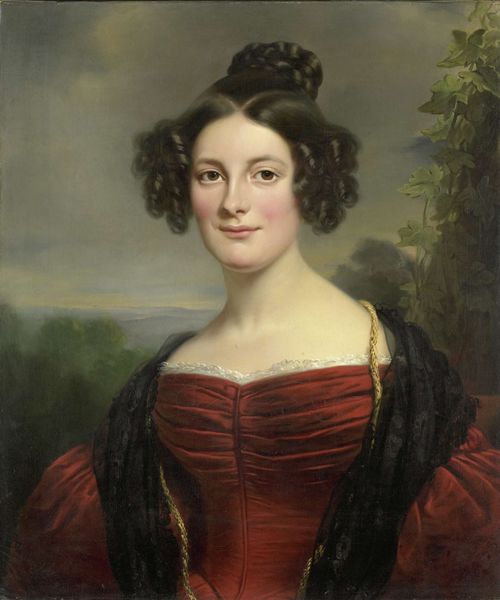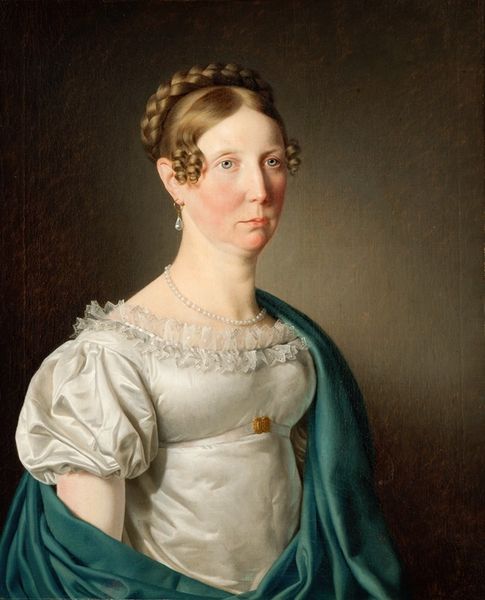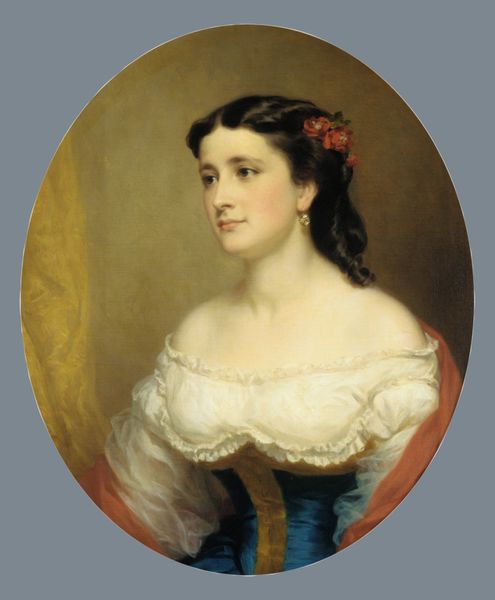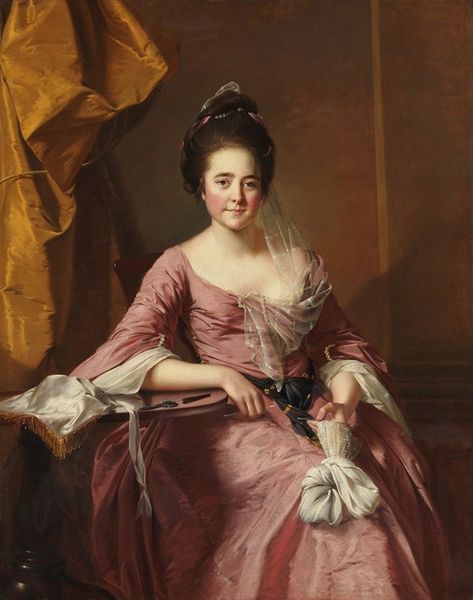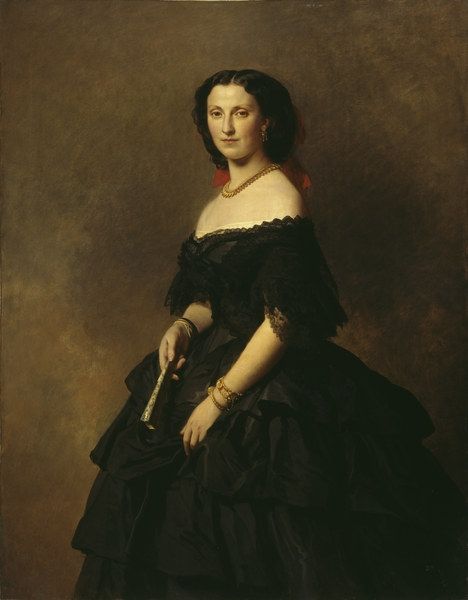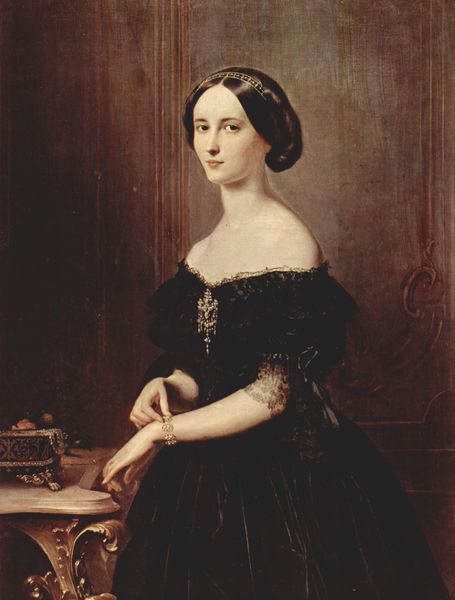
Thora Hunæus, f. Garbrecht, kunstnerens hustru 1848
0:00
0:00
painting, oil-paint, canvas
#
portrait
#
character portrait
#
painting
#
oil-paint
#
figuration
#
canvas
#
historical fashion
#
romanticism
#
genre-painting
#
history-painting
#
academic-art
Dimensions: 120 cm (height) x 97.5 cm (width) (Netto)
Andreas Herman Hunæus painted this portrait of his wife, Thora, in 1855, capturing her with an understated elegance. Note the delicate lace cap adorning her head, a symbol of domesticity and virtue, echoing the headdress of matrons in Renaissance portraits. This motif is not isolated. Consider the veiling of female figures throughout art history. From ancient Roman sculptures to the Madonnas of the Italian Renaissance, the veil often signifies modesty, marital status, and societal role. Yet, it also hints at the hidden, the mysterious aspects of womanhood. Here, Thora’s gaze is direct, yet softened. There’s an emotional openness but also a hint of melancholy. The brooch she wears at her chest, a small sun, perhaps speaks of inner warmth and her role as the heart of the Hunæus home. Just as in the cyclical nature of the seasons, these symbols are persistent. The imagery continues to shape our subconscious understanding of the feminine ideal.
Comments
No comments
Be the first to comment and join the conversation on the ultimate creative platform.
